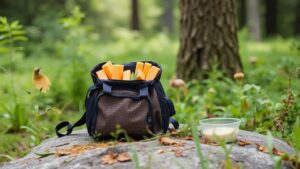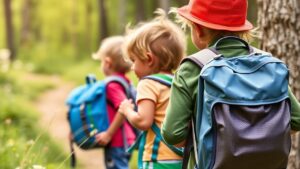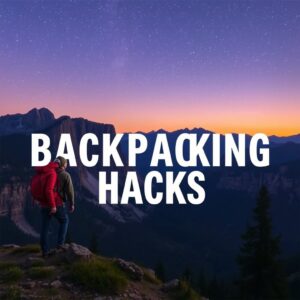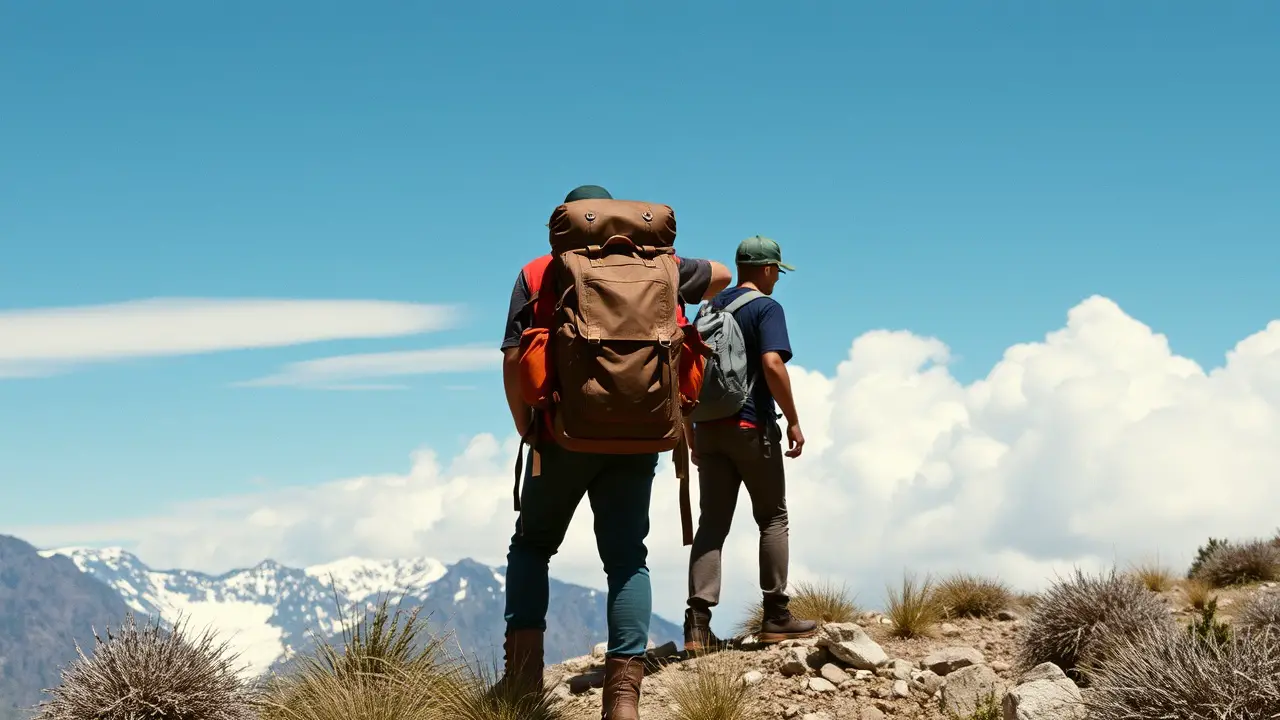Mexico city snow. If you’re in Mexico city and looking for snow, we’ve got some good news: it happens all the time! But not just any snow—we get a lot of the white stuff in Mexico City. In fact, it can be so common that many people forget that they’re actually experiencing a seasonal phenomenon.
Contents
So if you want to check out some actual flakes falling from the sky, here are our top picks for places where you can catch them on your next visit. There is a lot of snow in Mexico. There are many places in Mexico where it snows, but there are also many places that do not get any snow at all.
For example, it does not snow in Cancun or any place near the coast. In fact, most of the country does not see snow, but there are some areas that do receive it periodically.
Snow in Mexico City might seem rare to most people, but the city is located at a high altitude, so occasionally a cold rainstorm can cover the city in snow. This makes for some beautiful and cool photos and videos. Learn more about snow in Mexico City with this helpful guide.
Mexico City snow
Mexico City snow is a very rare event. It only happens once or twice a decade, although it can be more frequent if the city gets a lot of precipitation during the winter.
Mexico City has been experiencing many snowfalls in the last few years, but they are very rare and not expected to happen each winter.
The last time Mexico City got snow was in December 2017, when we had some accumulation on the ground and temperatures around freezing point. However, this was not enough to call it
The first time Mexico City experienced snowfall was in February 1942, when we had more than 1 inch (2.54 cm) of accumulation on the ground and temperatures around freezing point as well.
This was also not enough to call it “snow,” since it was more like sleet falling from clouds that were already full of raindrops instead of snow crystals falling from clouds that are full of water vapor.
This is why we don’t necessarily understand what it means to have a “snow day” in Mexico City. It can be very confusing when you are trying to get your kids ready for school and you open the window and the first thing you see is snowflakes drifting down from the sky.
This is why many Mexican people don’t really know what “white Christmas” or “a blizzard” means because they have never seen one before. If you ask anyone if they remember their first time seeing snow,
Most of them will tell you that it happened when they were teenagers or young adults who went outside to play in it because they didn’t believe that something could fall from the sky and turn into ice crystals on their hands until they had an experience with it.
Read more articles: How to Pack Eggs for Backpacking?
Map of Mexico City
Helpful points to learn from
- How often does it snow in Mexico City?
- Is the cost of living high in Mexico City?
- When does it snow in Mexico?
- In Mexico, where does it snow?
- 1. Mexiquillo, Durango
- 2. Sombrerete, Zacatecas
- 3. Arteaga, Coahuila
- 4. Copper Canyon, Chihuahua
- 5. Nevado de Toluca, State of Mexico
- 6. New Mexico
How often does it snow in Mexico City?
Snowfall in Mexico City is rare, but it does happen every year. The last recorded snowfall was on December 11th, 2018 at the highest point of the city, 2200 meters above sea level, where temperatures were below freezing for a couple of days.
This is not typical, though; usually, you can only see snow if you go higher than 2200 meters above sea level.
The last time Mexico City saw snowfall was in 2007, when the capital city received its first fall of snow in almost 100 years. It was only for a few hours, but it was enough to make traffic come to a standstill and cause chaos on the streets.
Mexico City is located at 2,200 meters above sea level, so it’s not surprising that snowfalls are rare here. The last time we received a proper snowfall was in 2007, when the capital city received its first fall of snow in almost 100 years.
It was only for a few hours, but it was enough to make traffic come to a standstill and cause chaos on the streets. The city’s highest point is the Tlachihualtepetl volcano, which stands at 3800 meters above sea level.
You can also see snow on this mountain in winter. The reason why snow is so rare in Mexico City is because temperatures are usually too high for it to fall.
The city’s highest point is the Tlachihualtepetl volcano, which stands at 3800 meters above sea level. You can also see snow on this mountain in winter. The reason why snow is so rare in Mexico City is because temperatures are usually too high for it to fall.
Read more articles: How to Backpack with Eggs?
Is the cost of living high in Mexico City?
If you’re on a budget and want to keep your costs down while visiting Mexico City, there are several things you can do to save money. First, try not to stay in the city center. This is where most of the attractions are located, as well as where most tourists stay due to its proximity.
But prices are higher here because more people want to stay here and use services like restaurants and taxis.
Second, look into using public transportation instead of taxis whenever possible. Mexico City has an extensive subway system that can get you anywhere in the city quickly and cheaply (most rides cost less than $1 USD).
Third, avoid eating at restaurants that specialize in tourist foods like tacos al pastor or street-side hot dogs; these establishments charge more than regular Mexican eateries, which tend to serve more than delicious food.
But they also provide better value for money because they cater specifically to locals rather than tourists from abroad who don’t know as much about cuisine but wouldn’t mind paying a little more because everything else seems so cheap here, right?
Wrong! There’s no reason why anyone should pay more money just because they think something should cost more because it looks good or sounds exotic…
Finally, if you’re looking to save as much money as possible while still enjoying yourself in Mexico City, then consider staying in one of the many hostels that can be found all over the city (most are located within close proximity to the main tourist attractions).
These hostels offer cheap accommodation and meals but also provide free wifi access, which is a nice bonus.
Read more articles: Best Texas State Parks for RV
When does it snow in Mexico?
There are a few places in Mexico where you can expect to see snowfall.
Mexico City has a year-round average temperature of 22 degrees Celsius, but it’s also home to the National Meteorological Service (SEMARNAT), and therefore, it’s one of the most important cities for weather forecasting in the country.
The agency gives forecasts and warnings about the weather in Mexico City during extreme events like hurricanes and blizzards.
The other cities with snowfall are: Mexiquillo (Durango), Sombrerete (Zacatecas), Arteaga (Coahuila), Copper Canyon (Chihuahua), and Nevado de Toluca, State of Mexico.
The state of Mexico is home to the highest peak in the country, which is Nevado de Toluca at 5,636 meters (18,491 feet). The mountain was formed by volcanic activity about 5 million years ago. It is part of a chain of volcanoes that spans the middle of Mexico.
The state has a predominantly temperate climate, but there are some variations depending on altitude. The average annual temperature for the city of Toluca is 15 degrees Celsius, with very little variation throughout the year.
The weather in the state capital is very similar to Mexico City, except that it is slightly colder.
The city of Toluca has an average annual temperature of 17 degrees Celsius (63 degrees Fahrenheit), with its coldest month being January at 12 degrees Celsius (53 degrees Fahrenheit) and its warmest month being May at 22 degrees Celsius (71 degrees Fahrenheit).
Read more articles: Seattle to Yellowstone Road Trip
Mexican Climate
Mexico City has a tropical climate, which means that it can get hot and humid during the summer months. There are two seasons in Mexico: dry (between November and April) and wet (between May and October).
The dry season is characterized by warm days with low humidity, while the wet season brings cooler temperatures but still high humidity.
One of the most notable features of Mexico’s climate is its rainy season, known locally as “nortes” or hurricanes. These storms occur during the late summer months when moist air from the Caribbean Sea collides with dry air from North America.
The result is the formation of tropical cyclones that can cause extensive damage. The most infamous example was Hurricane Gilbert in 1988, which made landfall near Acapulco and caused an estimated $2 billion in damage.
Mexico City’s weather is generally warm all year, with average highs of 21 °C (70 °F) and lows of 13 °C (55 °F).The rainy season occurs between May and October, when storms roll in from the Pacific Ocean.
These storms usually last just a couple hours but can bring heavy rainfall that floods streets and causes damage to buildings.
The rainy season is also when Mexico City’s infamous “nortes” hit. These northerly winds blow in from the Gulf of Mexico and can cause temperatures to drop dramatically within a few hours.
Read more articles: Snakes in Spain
In Mexico, where does it snow?
Mexico has a long history of snowfall, but the Mexican government doesn’t keep records on where it snows in Mexico. There are places in Mexico that get snowfall, but there isn’t much information about them available online.
To find out if it snows in Mexico and how much or little it does, I decided to look at different locations with known records for snowfall. This list includes:
- Mexiquillo, Durango
- Sombrerete, Zacatecas (also known as Mineral del Monte)
- Arteaga, Coahuila
- Copper Canyon region near Chihuahua City (Monterrey area)
- The Nevado de Toluca volcano is located near Mexico City.
- New Mexico
These places all have records for snowfall, but only Durango and the Copper Canyon regions in northern Mexico are known to see regular snowfall each year. This is because they are at high elevations, where temperatures are cooler than the surrounding area.
Durango is located at about 3,200 feet (975 meters) above sea level, while the Copper Canyon region is at about 7,500 feet (2.29 kilometers).
It is possible to see snow in Mexico, but only in certain locations. The Copper Canyon region near Chihuahua City gets snow each year, as does Durango Sombrerete (also known as Mineral del Monte). You can also find snow at high elevations like the Nevado de Toluca volcano near Mexico City and New Mexico.
Mexico City, Mexico, is also known to receive snowfall, but only rarely. The city sits at about 7,400 feet (2.26 kilometers) above sea level, and the nearby Sierra Madre Mountains get snow each year.
Read more articles: Snakes of Spain
1. Mexiquillo, Durango
The small town of Mexiquillo is located in the state of Durango, Mexico. It’s a quaint little place with a population of around 8,000 people and sits at an altitude of 1,400 meters above sea level—so it certainly qualifies as a “mountain town!”
The area around Mexiquillo is full of natural beauty. The town can be found near the Sierra Madre Occidental mountain range, and there are plenty of hiking trails nearby if you want to explore on foot or horseback.
and one nearby park has over 100 different species of cacti growing there (including some beautiful ones like prickly pear). If you love nature, then this spot will definitely be worth your while!
But it’s not just the nature that makes Mexiquillo such a great place to visit: The town itself is home to some pretty impressive architecture, including churches and buildings with Moorish influences.
There are also plenty of stores selling local handicrafts (such as pottery), which you can buy as souvenirs for friends back home.
Mexiquillo is a great place to visit if you’re looking for an authentic Mexican town where you can get away from the hustle and bustle of larger cities. It’s also a good spot for hiking, horseback riding, or just exploring on foot!
Where to stay: Cabaa La Mazatleca in Mexiquillo
Read more articles: Backpacking with Eggs
2. Sombrerete, Zacatecas
Located in the heart of the Sierra Madre Occidental mountain range, Sombrerete is a city with a population of approximately 33,000 people. It is located in Zacatecas, Mexico’s third-largest state by area and fifth-largest by population.
Sombrerete has an elevation of over 6,500 feet (2,000 m) above sea level and gets about 30 inches (760 mm) of snow per year!
The city itself is quite small, but there are several surrounding communities that make up the municipality of Sombrerete. Many buildings in the city center have been fixed up to look more modern, but they still have traditional Mexican architecture.
The city was founded in 1561 and named after a mine of the same name. Hernán González de Mendoza and Francisco de Ibarra were the first to look for silver deposits in the area around the mine in 1553.
It is believed that Sombrerete got its name from one of the first mines located there. In fact, the city itself is named after one of Zacatecas’ most famous mines.
The Spanish word “sombrerete” means “shovel” or “shovel-shaped” in English; the mine was shaped like a shovel. Sombrerete’s economy is based on mining and tourism, as well as manufacturing and agriculture.
Where to stay: Bosques de Monterreal
Read more articles: Rainbow Beach in Australia
3. Arteaga, Coahuila
Arteaga is a city in the northeastern part of the Mexican state of Coahuila. Located in the Sierra Madre Oriental, it’s a picturesque mountain town about an hour south of Monterrey.
The city can get quite chilly, with temperatures sometimes dropping below freezing during the winter months (November to April).
People have lived in the area around Arteaga for thousands of years, but it wasn’t until 1582 that Spanish conquistadors came here for the first time.
It wasn’t until the 18th century that permanent settlement took place, and by 1864, Arteaga became its own municipality within Nuevo León state.
Arteaga is famous for its beautiful colonial architecture and is listed as a UNESCO World Heritage Site. It’s also home to one of Mexico’s most prestigious universities, the Universidad Autónoma de Nuevo León. The city has several museums, including the Museo de Arte Colonial.
It also has a lively cultural scene, with many festivals, concerts, and other events throughout the year. The city is surrounded by mountains, which makes it a popular place for hiking and mountain biking.
Where to stay: Bosques de Monterreal
4. Copper Canyon, Chihuahua
Copper Canyon is located in Chihuahua, Mexico, and it is one of the largest canyons in the world. It is a canyon system of the Sierra Madre Occidental, which stretches from Arizona to Durango.
The Copper Canyon has been called “Grand Canyon North” since it’s similar to its American counterpart, but it’s actually much larger with over 100 miles (160 kilometers) of trails to hike through.
The area has become popular among tourists looking for an adventurous getaway with lots of outdoor activities available year-round, including hiking and camping at different elevations depending on what time of year you visit!
The most popular trail is Barrancas del Cobre (Copper Canyon), which leads you through a series of canyons with lush vegetation and views of waterfalls.
You will also get to see several indigenous communities that still practice their traditions, including making pottery and weaving textiles.
There are many activities available in the area, including rafting, horseback riding, mountain biking, and camping at different elevations depending on what time of year you visit!
Where to stay: Copper Canyon Lodge
Read more articles: Taking Fresh Eggs Backpacking
5. Nevado de Toluca, State of Mexico
Nevado de Toluca is in the state of Mexico, about 30 kilometers from Mexico City. It is home to a ski resort that attracts many tourists during the winter months.
The ski season lasts from December through March, though it can vary depending on weather conditions. During January, the average temperature is -3.9 °C (-25 °F).
The resort offers many activities, including hiking, snowmobiling, and ice skating. There are also more than 20 runs for skiing. Tubing and sledding are available for those who do not want to ski or snowboard.
The resort is open from 9:00 a.m. to 5:00 p.m., though hours vary depending on the season. Prices are reasonable and include equipment rental and lift tickets.
The resort is located in the El Edén neighborhood, which is about a 20-minute drive from the city center. This area is considered to be one of the safest in Mexico City. The ski resort has an abundance of parking and restrooms available on site.
The resort has an abundance of parking and restrooms available on site. The main attraction at this ski resort is the view of Mexico City’s skyline from above.
Where to stay: Rancho Viejo
6. New Mexico
New Mexico is a state in the southwest region of the United States. It is the 5th most extensive and the 36th most populous of the 50 states. New Mexico is known as the “Land of Enchantment,” and its capital, Santa Fe, has been designated a World Heritage City by UNESCO.
During the Spanish Conquest in 1540, the first European explorers came to the area. They were looking for gold and silver but didn’t find much.
Mexico got rid of Spain in 1821, and New Mexico became a province. From 1880 to 1970, most of New Mexico’s economy was based on cattle ranching, sheep farming, and mining for silver, gold, and copper.
In 1912, New Mexico was admitted as one of two U.S. states created out of Texas’ northern half (the other being Colorado). The name “New Mexico” means “Land Of The Mountain Passes” or “Place Of Many
New Mexico is a region of the United States, specifically located in the southwestern part of the country. It’s known for its Native American culture and Spanish colonial history.
Where to stay: Taos Ski Valley
Conclusion
As you can see, Mexico has a lot to offer for people who want to experience winter. Whether you enjoy skiing, snowboarding, cross-country skiing, or sledding, there are numerous places to visit without having to travel far from home.
Mexico City is a great place to live and work, so if you’re looking for an adventure in Mexico, then this might be the place for you.
It is known as one of the biggest cities in North America with a population of over 21 million people, which means there are lots of things happening all year round! So if you’re interested in finding out more about this amazing city, then contact us today!
Read more articles: Can You Take Eggs Backpacking?











Leave a Reply